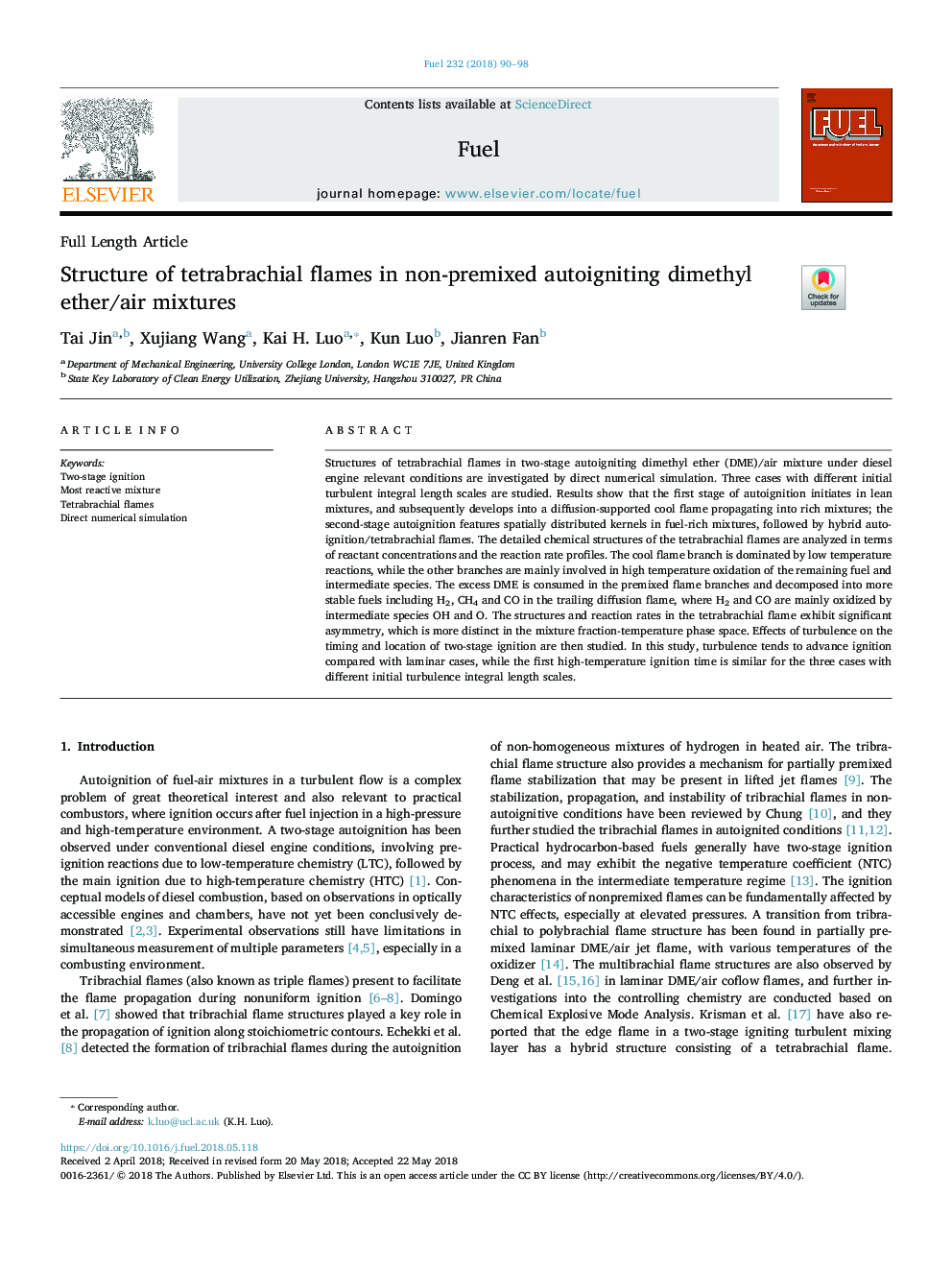| Article ID | Journal | Published Year | Pages | File Type |
|---|---|---|---|---|
| 6630358 | Fuel | 2018 | 9 Pages |
Abstract
Structures of tetrabrachial flames in two-stage autoigniting dimethyl ether (DME)/air mixture under diesel engine relevant conditions are investigated by direct numerical simulation. Three cases with different initial turbulent integral length scales are studied. Results show that the first stage of autoignition initiates in lean mixtures, and subsequently develops into a diffusion-supported cool flame propagating into rich mixtures; the second-stage autoignition features spatially distributed kernels in fuel-rich mixtures, followed by hybrid autoignition/tetrabrachial flames. The detailed chemical structures of the tetrabrachial flames are analyzed in terms of reactant concentrations and the reaction rate profiles. The cool flame branch is dominated by low temperature reactions, while the other branches are mainly involved in high temperature oxidation of the remaining fuel and intermediate species. The excess DME is consumed in the premixed flame branches and decomposed into more stable fuels including H2, CH4 and CO in the trailing diffusion flame, where H2 and CO are mainly oxidized by intermediate species OH and O. The structures and reaction rates in the tetrabrachial flame exhibit significant asymmetry, which is more distinct in the mixture fraction-temperature phase space. Effects of turbulence on the timing and location of two-stage ignition are then studied. In this study, turbulence tends to advance ignition compared with laminar cases, while the first high-temperature ignition time is similar for the three cases with different initial turbulence integral length scales.
Related Topics
Physical Sciences and Engineering
Chemical Engineering
Chemical Engineering (General)
Authors
Tai Jin, Xujiang Wang, Kai H. Luo, Kun Luo, Jianren Fan,
